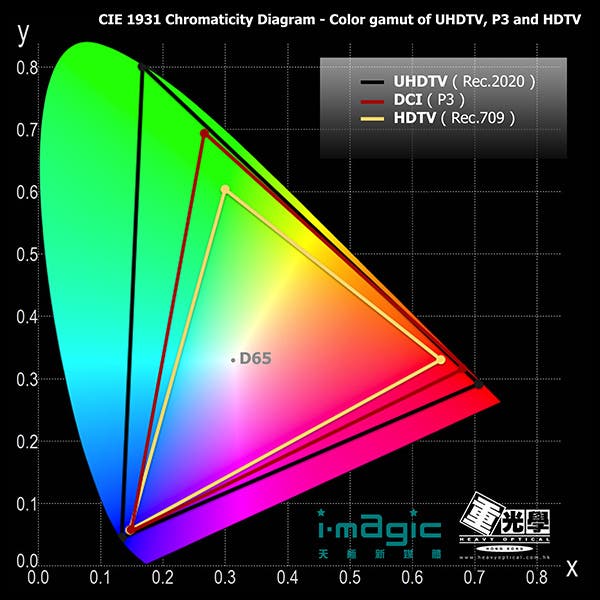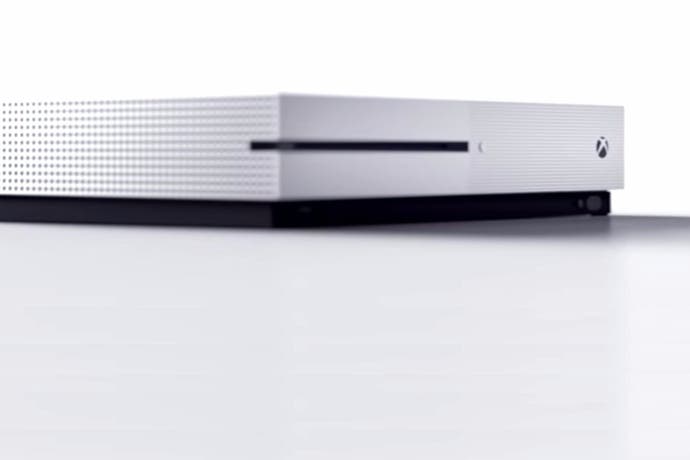HDR: What does it mean for games and movies?
Display technology is evolving - but what improvements does high dynamic range actually deliver?
This week's reveal of the Xbox One S is our first look at how console technology is evolving to match the increased functionality of the latest living room displays. The new unit is equipped with an HDMI 2.0 controller, opening the door to ultra HD media support and games rendered in HDR - high dynamic range.
4K displays are dropping in price though fully HDR-ready screens still command a hefty price premium, while first-gen products are still some way off the finished article. However, content and display standards are fully locked down, and all major manufacturers and multimedia providers are on board.
With entry level prices for a 500GB unit starting at £249/$299/€299 and armed with a revised UHD Blu-ray drive, the new, slim Xbox One S may well be the cheapest, most fully featured 4K-capable media machine on the market when it launches in August. But on top of that, the HDR gaming support is already looking pretty impressive. During Microsoft's E3 presentation it was revealed that Forza Horizon 3 and Gears of War 4 support HDR - no doubt the first of many games to use the expanded dynamic range possible on the latest console revision. But what does this actually mean for the viewing experience? And how are games likely to take advantage of the added resolution and increase in contrast when processing power is limited on the console compared to high-end PCs?
At a basic level, 4K delivers four times the pixel count of a native 1080p image, with a resolution of 3840x2160, but that's only part of the new display standard at the cutting the of home entertainment. UHD also encompasses support for wider colour gamuts than standard HDTVs, along with high dynamic range - features designed to extract the most detail from 4K sources beyond what is possible by upping pixel counts alone. In fact, most movies are still finished at 2K before being upscaled to 4K, so HDR and increased colour gamuts are needed to provide a tangible leap over current 1080p Blu-rays.

What is HDR and what are the benefits?
Essentially, HDR allows for displaying a wider range of colours with brighter highlights and perceived deeper blacks while preserving details across mid-tones when all three elements are on screen. This allows for a more 'true to life' presentation that more closely replicates what the human eye is capable of seeing. On top of that, more of the detail in the source material is preserved compared to current standards, where colour compression cuts down on the amount of different tones rendered on-screen.
The use of higher colour gamuts and bit-depths plays a key part in this, with 10 and 12 bit colour processing used to enhance the presentation over dull HD visuals. For example, 10-bit colour provides 1024 shades for every primary colour compared to just 256 shades for standard HD Blu-rays, which are mastered in 8-bit colour. As a result, the expanded colour precision allows for more intricate detail to be shown across the entire scene - and not just in scenes with high contrast between light and dark areas.
In this respect 4K isn't just about rendering more pixels on screen, but about creating better-looking pixels that more accurately replicate the source material, coming closer to how we see the world with our own eyes. The Xbox One lacks the necessary GPU grunt to render complex games natively in 4K, but the use of HDR and wider colour gamuts should still provide extra visual flair to 1080p titles, which are then upscaled to UHD resolution. There's the potential to realise extra details in bright highlights and in dark areas, assuming that the HDR pass is mastered at 4K after upscaling has taken place - this should still add increased per-pixel information over a 1080p image.
HDR: conflicting solutions

Right now there are several competing HDR implementations on the market vying to become the de-facto standard, thus making support a potential minefield when it comes to compatibility and accurately displaying HDR content on screen. HDR-10 and Dolby Vision are the main two, with the key difference between them being the colour depth and peak brightness. HDR-10 is the standard chosen for UHD Blu-rays, and uses 10-bit masters and goes up to 1,000 nits of brightness. While, on the other hand, masters are realised at 12-bit for Dolby Vision, with most releases targeting 4,000 nits of peak brightness.
Dolby's implementation is the more advanced of the two, but it also requires additional processing hardware. Dolby Vision also supports HDR-10 by default but not the other way around. This makes it seem less likely that Xbox One S will support this format, though no details have been released as to which HDR formats will work with the console. It's possible that multiple versions of HDR are supported, but Microsoft has been surprisingly reticent to release a full Xbox One S spec. Update 21/6/16 10:00 GMT: We now have confirmation that Xbox One is indeed targeting the HDR-10 standard for Xbox One S.
The differing HDR solutions are already causing a few issues with early hardware that supports the UHD specifications, with some displays designed around handling Dolby Vision incorrectly mapping HDR-10 content. So to ensure maximum compatibility it would make sense to support as many HDR formats as possible, thus avoiding any potential issues. In that respect, there's definitely a sense that manufacturers are still working around how best to handle the differing methods of displaying HDR at home and how Xbox One S fits into that remains to be seen.
HDR content: what's available?
Right now the main source of HDR material is UHD Blu-rays. While not every disc is required to support the format, it is expected that all the major studios will produce HDR-enabled versions of popular back catalogue titles, while most of the latest movies should support this feature. Increased dynamic range is the key selling point of UHD discs and this is likely the place which hosts the most content, especially seeing as many films won't be getting native 4K transfers due to the cost of the remastering process.
Streaming services are also getting on board, though currently content that supports both 4K and HDR is thin on the ground. There are plans for over 150 hours of HDR enabled content on Netflix, with Bloodline, Daredevil, Jessica Jones getting the treatment. The list of support looks impressive, but users are reporting that actual working titles right now are highly limited.
Amazon Prime Instant Video has also revealed plans to support HDR, but right now, searching for HDR content on the service brings up just one result - Mozart in the Jungle. In short, we're in the beginning stages here. HDR content is starting to roll out, but support is patchy to say the least and may well vary on a region by region basis.
HDR gaming is where things really start to get exciting, and Xbox One is the first major platform to feature titles running using increased dynamic range - though PC support is also coming very soon. The benefits are likely to be similar to that of video and film using the technology, but how developers make this happen on the console is the interesting part. UHDTVs will only accept HDR metadata from a 4K signal. However, this doesn't mean that the Xbox One has to render natively at 4K, just output at that resolution with the correct HDR data encoded into the signal.
As we saw with 1080p support on PlayStation 3, simple titles - such as 2.5D action games - could perhaps run in 4K and use HDR to give the visuals a boost over the same presentation at full HD, but this is out of the question for triple-A titles. Instead, running at 1080p or below and then upscaling to 4K seems like a more viable solution and what's almost certainly happening in Microsoft's E3 demos.
HDR: the story so far
Xbox One S looks set to move beyond Nvidia's Shield Android TV as the most fully featured 4K media box on the market - you get UHD Blu-ray support (by far the most prolific form of UHD, HDR-enabled content on the market right now) plus we would hope to see updated 4K and HDR support from the major streaming services. But it's very much an emergent format right now with a price-premium on the relevant display hardware, plus a dearth of content beyond the UHD Blu-ray scene.
And beyond that, it's worth pointing out the AV specialist sites are also discovering some fundamental issues with current HDR-equipped displays. The bottom line is this - while the dynamic range of the screens can show a night and day difference compared to standard 4K tech, fundamentally, they are not brighter. This presents as a more nuanced image, but one that can look dimmer - meaning that much of the impact of HDR is lost during daytime viewing.
But the bottom line is this: without pioneering technology and the software to back it, we won't see any real progress in the way that movies and games are displayed. It's great to see Xbox One S add this technology, and while the move to support HDR may not be a game-changer, it's certainly good to see the boundaries being pushed. We'll do our best to test the 4K and HDR capabilities of the new hardware for both media and games as soon as the relevant hardware and software is available.

